I cannot properly convert and/or display an ROI using a QRect in a QImage and create a cv::Mat image out of the QImage. The problem is symmetric, i.e, I cannot properly get the ROI by using a cv::Rect in a cv::Mat and creating a QImage out of the Mat. Surprisingly, everything work fine whenever the width and the height of the cv::Rect or the QRect are equal.
In what follows, my full-size image is the cv::Mat matImage. It is of type CV_8U and has a square size of 2048x2048
int x = 614;
int y = 1156;
// buggy
int width = 234;
int height = 278;
//working
// int width = 400;
// int height = 400;
QRect ROI(x, y, width, height);
QImage imageInit(matImage.data, matImage.cols, matImage.rows, QImage::Format_Grayscale8);
QImage imageROI = imageInit.copy(ROI);
createNewImage(imageROI);
unsigned char* dataBuffer = imageROI.bits();
cv::Mat tempImage(cv::Size(imageROI.width(), imageROI.height()), CV_8UC1, dataBuffer, cv::Mat::AUTO_STEP);
cv::namedWindow( "openCV imshow() from a cv::Mat image", cv::WINDOW_AUTOSIZE );
cv::imshow( "openCV imshow() from a cv::Mat image", tempImage);
The screenshot below illustrates the issue.
 (Left) The full-size
(Left) The full-size cv::Mat matImage.
(Middle) the expected result from the QImage and the QRect (which roughly corresponds to the green rectangle drawn by hand).
(Right) the messed-up result from the cv::Mat matImageROI